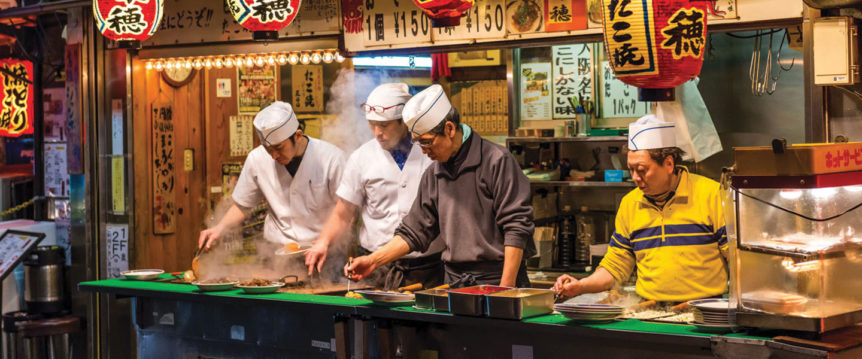When people think of Japanese food, sushi is typically top of mind. And although making a proper sushi roll requires a certain level of skill, it doesn’t have to be intimidating. Neither does cooking other traditional Japanese dishes, of which there are many.
“Home cooking in Japan is actually quite simple,” says Amy Kaneko, author of Let’s Cook Japanese Food! (Weldon Owen, 2017). “And the point of my book was to encourage people to make Japanese food at home.”
Kaneko, an American who married into a Japanese family, learned typical home recipes from her mother- and sister-in-law. Her mission is to demystify Japanese cuisine, using techniques and ingredients familiar to Americans.
Although Japanese food incorporates influences from Chinese cuisine, it is distinctive—the fact that Japan is an island lent to the development of the country’s unique cooking style. Staple items in a Japanese kitchen include white rice, miso (a paste made from fermented soybeans used to make soup, sauce or marinades), fish and vegetables.
Try: Oyako Donburi (Chicken & Egg Rice Bowl)
“The Japanese taste profile is to maintain the original flavor of the core ingredients and take it to a different level,” Kaneko says. Traditionally a Buddhist country, Japan for centuries had laws prohibiting the consumption of meat except for fish—a trend that changed only in 1854. Today, more meat dishes are served, but fish, eggs and tofu are the dominant proteins.
In the home, a Japanese meal is not served family-style. Rather, it is presented in smaller bowls and dishes to separate and showcase individual flavors. Ingredients are selected from what is available and fresh seasonally. Red meat, dairy, oils and fats are used sparingly, and fried foods are typically either tempura (vegetables dipped in a batter made from egg whites and cornstarch) or karaage (bite-sized pieces of meat and fish floured in a wheat batter and fried).
“Every meal will have elements of vinegar, salty and sweet—a range of flavors to choose from,” Kaneko says. “Most of the dishes are healthy and relatively low in calories, compared to the Western diet.”
Many Japanese dishes use ingredients and techniques home cooks will recognize. For example, “everyone can make fried rice,” Kaneko says. “It’s a great way to repurpose leftover vegetables into a meal.” Favorite meals at Kaneko’s home include omurice, tomato and chicken-fried rice stuffed in an omelet, and gyoza, pan-fried dumplings stuffed with vegetables, seafood or pork.
Other ingredients Kaneko favors? Soba (buckwheat noodles), which are popular in Japan and ultra-healthy. But they’re easy to overcook; she says to be sure to follow package instructions, and then plunge noodles into cold water before serving with a dipping sauce. Miso paste is another favorite; mix some with a bit of sugar and sake and marinate fish in the mixture overnight before cooking it under a broiler. For a go-to dressing on everything from green beans to broccoli, Kaneko combines ground sesame seeds, sugar, soy sauce and water.
Try: Soba Noodle and Edamame Salad with Miso Dressing
Through her experience and learning from family, Kaneko has discovered—and shares in her cookbook—that Japanese recipes are versatile to accommodate whatever ingredients are on hand. And when one understands the philosophy of letting the natural flavors of ingredients shine through, cooking Japanese cuisine at home is accessible for all.













